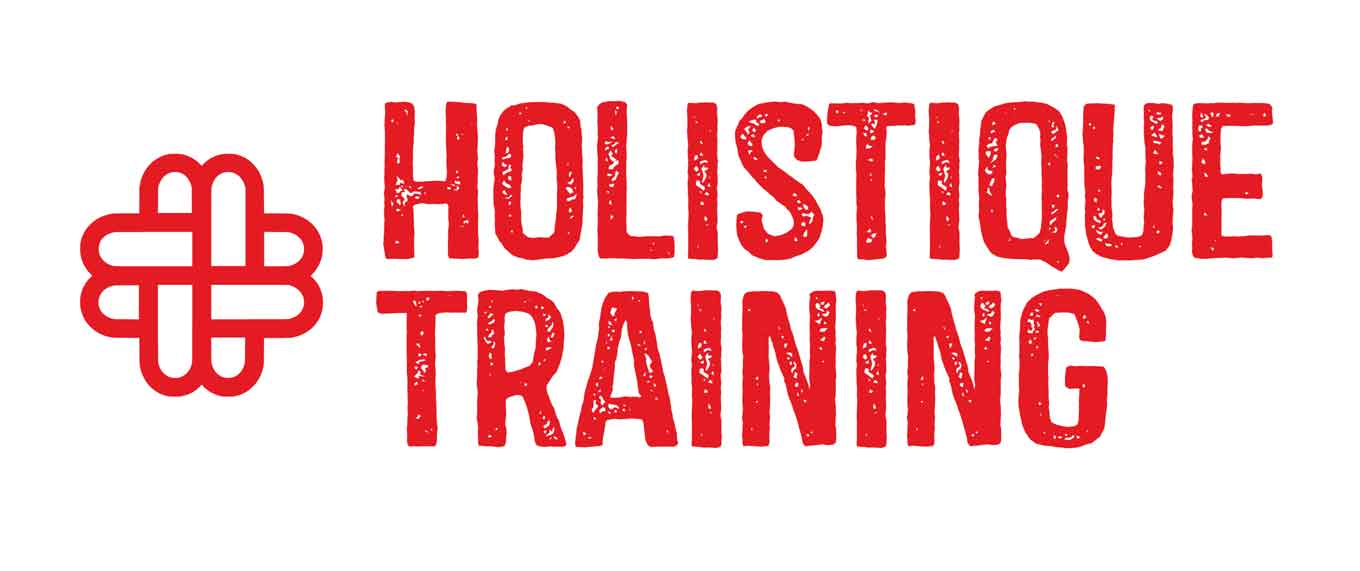- Table of Contents
- Introduction
- What is Vision Casting in Business?
- Dream, Vision, and Mission: What Are the Differences?
- Who Plays a Role in Vision Casting?
- 1. Leadership
- 2. Human Resources (HR)
- 3. Employees
- 4. Stakeholders
- 5. Cross-Functional Teams
- Why is Vision Casting Important for a Company?
- 1. Direction and Focus
- 2. Motivation and Engagement
- 3. Cohesion and Alignment
- 4. Adaptability
- 5. Attracting Talent and Investment
- 6. Long-term Sustainability
- How to Implement Vision Casting
- 1. Engage Stakeholders
- 2. Define Core Values
- 3. Articulate the Vision
- 4. Communicate the Vision
- 5. Embed the Vision in Culture
- 6. Set Goals and Metrics
- 7. Foster Continuous Dialogue
- 8. Celebrate Milestones
- Examples of Vision Casting
- 1. Tesla
- 2. Google
- 3. Nike
- 4. Starbucks
- Conclusion
Introduction
Creating a successful business is not solely about executing tasks or meeting immediate goals; it involves envisioning a future that inspires and motivates every member of the organization. This is where the concept of vision casting comes into play. This blog post delves into the essence of vision casting, its significance in the business landscape, and how it can be effectively implemented to drive success. We will explore the nuances of dreams, visions, and missions, identify key stakeholders involved in the process, and provide practical examples to illustrate these concepts. Let’s embark on this journey to understand how a well-articulated vision can transform a company.
What is Vision Casting in Business?
Vision casting is the process of articulating a clear and compelling future state for an organization. It involves not just stating what a company aims to achieve but also painting a vivid picture of what that future looks like. This vision serves as a guiding star, influencing strategic decisions, shaping company culture, and driving employee engagement.
At its core, vision casting is about creating a shared understanding of where the organization is headed and why it matters. It helps align the efforts of various teams and individuals towards a common goal, fostering a sense of purpose and belonging. Vision casting is not a one-time event; it is an ongoing dialogue that evolves as the company grows and the external environment changes.
Dream, Vision, and Mission: What Are the Differences?
To fully grasp the concept of vision casting, it is essential to differentiate between dreams, visions, and missions, as these terms are often used interchangeably but have distinct meanings.
- Dream: A dream is an aspirational idea of what one hopes to achieve. It is often broad and can be quite abstract, serving as a source of inspiration. For example, a dream could be to "change the world" or "make a significant impact on society." Dreams are personal and can vary widely from individual to individual.
- Vision: A vision is a more concrete representation of the future state of an organization. It is a specific, clear, and compelling picture of what success looks like. A vision answers the question, "What do we want to become?" For instance, a company's vision might be "to be the leading provider of sustainable energy solutions worldwide."
- Mission: The mission statement defines the organization's purpose and primary objectives. It focuses on the present and articulates why the company exists and what it does. A mission statement might say, "We provide innovative and eco-friendly energy solutions to empower communities."
Here’s a table that illustrates the differences between dreams, visions, and missions:
Aspect | Dream | Vision | Mission |
Definition | Aspirational idea or hope | Clear picture of the future state | Purpose and primary objectives |
Focus | Broad and abstract | Specific and actionable | Present and operational |
Timeframe | Long-term and idealistic | Mid to long-term | Short to mid-term |
Purpose | Inspiration and motivation | Direction and alignment | Daily operations and goals |
Example | "Change the world" | "To be the leading provider of sustainable energy solutions" | "We provide innovative energy solutions to empower communities." |
In summary, while dreams are broad and aspirational, visions are specific and actionable, and missions articulate the organization's current purpose. Vision casting involves translating dreams into a tangible vision that aligns with the company’s mission.
Who Plays a Role in Vision Casting?
Vision casting is a collaborative process that requires the involvement of various stakeholders within an organization. Each group plays a crucial role in shaping, communicating, and implementing the vision. Understanding the contributions of these key players can enhance the effectiveness of vision casting. Here’s a deeper look at who is involved and how they influence the process:
1. Leadership
Leadership sets the tone for vision casting and is responsible for articulating the vision in a way that resonates with all employees. Leaders must embody the vision through their actions and decisions, serving as role models for the desired culture and direction.
- Inspiration: Effective leaders inspire their teams by communicating a compelling vision that motivates employees to strive for excellence.
- Decision-Making: Leaders use the vision as a framework for making strategic decisions, ensuring that all initiatives align with the long-term goals of the organization.
- Trust Building: When leaders are transparent about the vision and involve employees in the process, it fosters trust and commitment within the organization.
2. Human Resources (HR)
The HR department plays a pivotal role in aligning the company’s vision with its talent management strategies. HR professionals are responsible for creating a culture that supports the vision, ensuring that recruitment, training, and performance management practices reflect the desired future state.
- Talent Acquisition: HR can attract candidates who resonate with the company’s vision, ensuring that new hires are aligned with organizational goals.
- Training and Development: HR develops training programs that instill the vision into employees, helping them understand how their roles contribute to achieving the vision.
- Performance Management: HR ensures that performance evaluations and feedback processes are aligned with the vision, reinforcing the behaviors and outcomes that support the organization’s goals.
3. Employees
Every employee has a stake in the vision casting process. Their insights, experiences, and aspirations can significantly contribute to shaping the vision. Engaging employees fosters a sense of ownership and commitment, making them more likely to work towards achieving the vision.
- Feedback and Input: Employees can provide valuable feedback on the vision, ensuring it reflects the realities of the workplace and resonates with diverse perspectives.
- Engagement: When employees feel they have a voice in the vision casting process, their engagement levels increase, leading to higher productivity and satisfaction.
- Implementation: Employees are the ones who execute the vision in their daily tasks. Their understanding and commitment to the vision are crucial for successful implementation.
4. Stakeholders
External stakeholders, such as customers, suppliers, investors, and community members, can also provide valuable perspectives during the vision casting process. Their feedback helps refine the vision and ensures it resonates with those who are impacted by the company’s actions.
- Market Insights: Stakeholders can offer insights into market trends and customer needs, helping to shape a vision that is relevant and forward-thinking.
- Building Relationships: Involving stakeholders in the vision casting process fosters collaboration and strengthens relationships, enhancing the organization’s reputation and credibility.
- Accountability: Stakeholders hold the organization accountable to its vision, ensuring that the company stays true to its commitments and values.
5. Cross-Functional Teams
Cross-functional teams, which include members from various departments, play a vital role in vision casting by bringing diverse perspectives and expertise to the table. These teams can help identify how different functions contribute to the overall vision.
- Holistic Perspective: Cross-functional teams ensure that the vision considers all aspects of the organization, from marketing and operations to finance and customer service.
- Collaboration: Working together fosters collaboration across departments, breaking down silos and promoting a unified approach to achieving the vision.
- Innovation: Diverse teams can generate innovative ideas and solutions that align with the vision, enhancing the organization’s ability to adapt and thrive.
Vision casting is a multifaceted process that requires the collaboration of various stakeholders within an organization. Leadership, HR, employees, external stakeholders, and cross-functional teams all play essential roles in shaping, communicating, and implementing the vision. By recognizing and leveraging the contributions of each group, organizations can create a compelling vision that inspires and motivates everyone involved, fostering a culture of engagement and alignment towards shared goals.
Why is Vision Casting Important for a Company?
Studies have shown that an alarming 63% of employees lack a clear understanding of their company's vision, which is why vision casting is important. It is not just a theoretical exercise; it is a critical component of organizational success that influences every aspect of a business. A well-articulated vision serves as a foundation for strategic planning, decision-making, and organizational culture. Let’s delve into why vision casting is essential for a company:
1. Direction and Focus
A clear vision provides a roadmap for the organization, outlining where it wants to go and what it aims to achieve. This clarity helps leaders and employees understand the overarching goals and priorities.
With a defined vision, all initiatives and projects can be aligned with the company’s long-term objectives. This alignment ensures that resources are allocated effectively and that efforts are not wasted on activities that do not contribute to the vision.
A compelling vision helps organizations prioritize their activities and make informed decisions. When faced with competing demands, teams can refer back to the vision to determine which initiatives best support their goals.
2. Motivation and Engagement
A well-crafted vision can inspire employees by providing them with a sense of purpose. When individuals understand how their work contributes to a greater cause, they are more likely to be motivated and engaged.
Employees who feel connected to the company’s vision are more likely to demonstrate loyalty and commitment. This emotional connection fosters a positive workplace culture and reduces turnover, ultimately benefiting the organization.
Vision casting empowers employees by giving them a stake in the organization’s future. When individuals feel that their contributions matter, they are more inclined to take initiative and go above and beyond in their roles.
3. Cohesion and Alignment
A compelling vision fosters a shared understanding among employees about the company’s goals and values. This common ground helps to unify diverse teams and encourages collaboration across departments.
When everyone is aligned with the vision, it becomes easier to break down silos between departments. Cross-functional collaboration is enhanced, leading to more innovative solutions and a stronger organizational culture.
A shared vision cultivates a sense of belonging and camaraderie among employees. When individuals work towards a common goal, it strengthens teamwork and enhances overall morale.
4. Adaptability
In today’s fast-paced business environment, organizations must be agile and adaptable. A strong vision provides a stable foundation that helps companies navigate change and uncertainty.
When faced with challenges or opportunities, a clear vision can serve as a touchstone for decision-making. Leaders can evaluate options against the vision, ensuring that choices align with the long-term goals of the organization.
A forward-looking vision encourages a culture of innovation. Employees are more likely to experiment and propose new ideas when they understand how these innovations contribute to the company’s future.
5. Attracting Talent and Investment
Companies with a clear and inspiring vision are more attractive to potential employees. Job seekers are drawn to organizations that demonstrate a commitment to a meaningful purpose and a positive impact.
A strong vision not only attracts talent but also helps retain it. Employees are more likely to stay with a company that aligns with their values and provides a sense of purpose. In fact,58% of companies with a well-defined and understood sense of purpose and vision saw growth exceeding 10%, in contrast to only 42% of companies that lacked it.
Investors also are more inclined to support companies with a well-defined vision. A clear direction signals stability and potential for growth, making the organization a more appealing investment opportunity.
6. Long-term Sustainability
Vision casting encourages organizations to think long-term. By anticipating future trends and challenges, companies can develop strategies that support sustainable growth and resilience.
A vision that incorporates social and environmental considerations can enhance a company’s reputation and responsibility. Organizations that prioritize sustainability are better positioned to thrive in an increasingly conscientious market.
A strong vision helps organizations build a legacy that extends beyond immediate profits. Companies that focus on long-term impact and value creation are more likely to leave a lasting mark on their industry and community.
The importance of vision casting in a company cannot be overstated. It provides direction, inspires motivation, fosters cohesion, enhances adaptability, attracts talent and investment, and supports long-term sustainability. By investing time and effort into articulating and implementing a compelling vision, organizations can create a thriving workplace culture and position themselves for enduring success in an ever-changing business landscape. Vision casting is not merely a strategic exercise; it is a vital practice that shapes the future of the organization and its stakeholders.
How to Implement Vision Casting
Implementing vision casting requires a structured approach. Here are the steps to effectively cast a vision within an organization:
1. Engage Stakeholders
Begin by engaging a diverse group of stakeholders, including leaders, employees from various departments, and external partners. This inclusivity ensures that the vision reflects a wide range of insights and experiences. PwC’s 2021 Global Culture Survey indicates that almost 70% of employees and leaders believe that company culture is more crucial to business success than strategic operations. By actively involving all employees in the vision casting process, leaders have the opportunity to foster a more dynamic, positive, and inclusive workplace culture.
Conduct Workshops and Focus Groups: Organize workshops or focus groups where stakeholders can share their thoughts on the company’s future. Use brainstorming sessions to gather ideas and feedback, fostering a sense of ownership among participants.
Utilize Surveys: Distribute surveys to collect input from a broader audience. This can help identify common themes and aspirations, ensuring that the vision resonates with the entire organization.
2. Define Core Values
Identify Guiding Principles: Core values are the foundation of the vision. Work with stakeholders to identify the principles that will guide the organization’s actions and decisions. These values should align with the desired future state and reflect the company’s culture.
Articulate Values Clearly:Once identified, articulate these values clearly and ensure they are easily understood by all employees. Values should be actionable and relevant to the day-to-day operations of the organization.
Integrate Values into Vision: Incorporate these core values into the vision statement to ensure that the desired future state aligns with the organization’s ethical and cultural framework.
3. Articulate the Vision
Craft a Compelling Vision Statement: Develop a clear and compelling vision statement that encapsulates the organization’s aspirations. Use vivid language to paint a picture of the future that resonates with stakeholders.
Make it Specific and Measurable: The vision should be specific enough to provide direction but also flexible enough to allow for adaptation as circumstances change. Consider including measurable goals that can help track progress towards the vision.
Seek Feedback: Share the draft vision statement with stakeholders and solicit feedback. This collaborative approach helps refine the vision and ensures buy-in from those who will be responsible for implementing it.
4. Communicate the Vision
Utilize Multiple Channels: Once the vision is finalized, communicate it widely across the organization. Use various channels such as meetings, newsletters, intranet platforms, and social media to ensure everyone is aware of the vision.
Create Visual Representations: Consider creating visual aids, such as infographics or posters, that illustrate the vision. Visual representations can enhance understanding and retention of the vision.
Lead by Example: Leaders should embody the vision in their actions and decisions. By demonstrating commitment to the vision, leaders can inspire employees to embrace it as well.
5. Embed the Vision in Culture
Align Policies and Practices: Integrate the vision into the company culture by aligning policies, practices, and behaviors with the vision. This includes incorporating the vision into performance evaluations, training programs, and recruitment strategies.
Foster a Supportive Environment: Create an environment that encourages employees to live the vision daily. Recognize and reward behaviors that align with the vision, reinforcing its importance within the organization.
Promote Open Dialogue: Encourage ongoing discussions about the vision. Create forums or regular meetings where employees can share their thoughts, ask questions, and provide feedback on how the vision is being implemented.
6. Set Goals and Metrics
Establish Clear Objectives: Develop specific goals that align with the vision. These objectives should be achievable and time-bound, providing a roadmap for progress.
Define Key Performance Indicators (KPIs): Identify key performance indicators that will help measure progress towards the vision. These metrics should be relevant, quantifiable, and aligned with the organization’s goals.
Regularly Review Progress: Implement a system for regularly reviewing progress towards the vision. This can involve quarterly or annual assessments to evaluate whether the organization is on track to meet its goals.
7. Foster Continuous Dialogue
Encourage Feedback Loops: Create mechanisms for continuous feedback on the vision and its implementation. This can include regular check-ins, surveys, and open forums for discussion.
Adapt and Evolve: Be open to adapting the vision as necessary. As the organization grows and the external environment changes, the vision may need to be refined to remain relevant and inspiring.
Celebrate Achievements: Recognize and celebrate milestones and achievements that align with the vision. This reinforces the importance of the vision and motivates employees to continue working towards it.
8. Celebrate Milestones
Acknowledge Progress: Celebrate both small and large milestones that contribute to achieving the vision. Recognizing progress reinforces the importance of the vision and motivates employees.
Create a Culture of Recognition: Establish a culture that values and rewards contributions towards the vision. This can include formal recognition programs, team celebrations, and shout-outs in company communications.
Share Success Stories: Highlight success stories that illustrate how the vision is being realized. Sharing these narratives can inspire others and demonstrate the impact of collective efforts.
Implementing vision casting is a comprehensive process that requires engagement, collaboration, and ongoing commitment from all stakeholders. By following these structured steps, organizations can create a compelling vision that inspires and motivates employees, aligns efforts across the organization, and ultimately drives success. Vision casting is not a one-time event; it is an ongoing journey that evolves as the organization grows and adapts to changing circumstances. Embracing this process can lead to a thriving organizational culture and a clear path toward achieving long-term goals.
Table: Metrics to measure the effectiveness of Vision Casting in the workplace
Metric | Description |
Employee Engagement Score | Measures employee commitment and enthusiasm towards the vision, often through surveys. |
Alignment with Strategic Goals | Evaluates how well departmental objectives align with the overarching vision, assessed through performance reviews. |
Retention Rate | Tracks the percentage of employees who stay with the organization, indicating satisfaction with the vision and culture. |
Innovation Rate | Assesses the number of new ideas or projects initiated, reflecting a culture of creativity inspired by the vision. |
Feedback Loop Participation | Monitors the frequency and quality of feedback provided by employees regarding the vision, demonstrating engagement in the process. |
Examples of Vision Casting
To illustrate the concept of vision casting, let’s explore a few examples from well-known companies:
1. Tesla
Tesla’s vision is to “accelerate the world’s transition to sustainable energy.” This vision is not only ambitious but also actionable, guiding the company’s product development, marketing strategies, and corporate culture. Tesla’s focus on innovation and sustainability resonates with both employees and customers, driving engagement and loyalty.
2. Google
Google’s vision is to “organize the world’s information and make it universally accessible and useful.” This vision informs every aspect of Google’s operations, from product development to user experience. By maintaining a clear focus on accessibility and utility, Google has established itself as a leader in the tech industry.
3. Nike
Nike’s vision is to “bring inspiration and innovation to every athlete in the world.” This vision not only emphasizes performance but also inclusivity, as Nike defines an athlete as anyone who has a body. This broad definition allows Nike to connect with a diverse audience and foster a sense of community.
4. Starbucks
Starbucks envisions itself as “the third place” between home and work, where people can gather and connect. This vision shapes the company’s store design, customer experience, and community engagement efforts. By creating a welcoming environment, Starbucks has built a loyal customer base.
These examples demonstrate how effective vision casting can shape organizational identity, drive strategic initiatives, and create lasting connections with stakeholders.
Conclusion
Vision casting is a powerful tool that can transform an organization’s trajectory. By articulating a clear and compelling vision, companies can align their efforts, inspire their workforce, and navigate the complexities of the business landscape. The process requires collaboration, commitment, and continuous dialogue, but the rewards are well worth the effort.
A strong vision not only guides decision-making but also fosters a culture of engagement and innovation. It creates a shared sense of purpose that motivates employees to contribute their best efforts toward achieving common goals. As organizations face increasing competition and rapid changes in technology and market dynamics, having a well-defined vision becomes even more crucial.
Our course, Planning for Strategic Development, is designed to equip leaders and teams with the skills and frameworks necessary for effective vision casting. Participants will learn how to engage stakeholders, define core values, articulate a compelling vision, and implement strategies that align with long-term objectives. By embracing the practice of vision casting, businesses can cultivate an adaptive and forward-thinking culture, positioning themselves for sustained success in an ever-evolving world.
Investing in this course will empower your organization to harness the full potential of vision casting, ensuring that you not only survive but thrive in the complex landscape of modern business. Join us to unlock the transformative power of strategic visioning and set your organization on the path to long-term success.

























